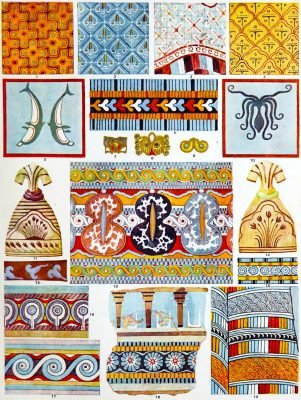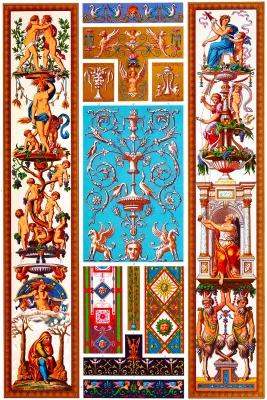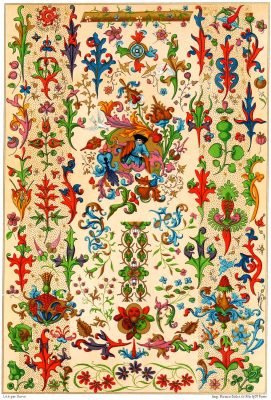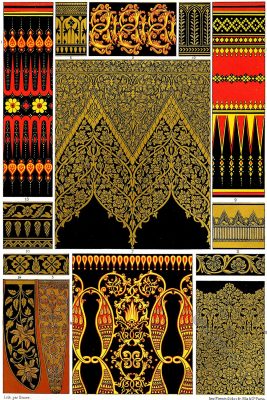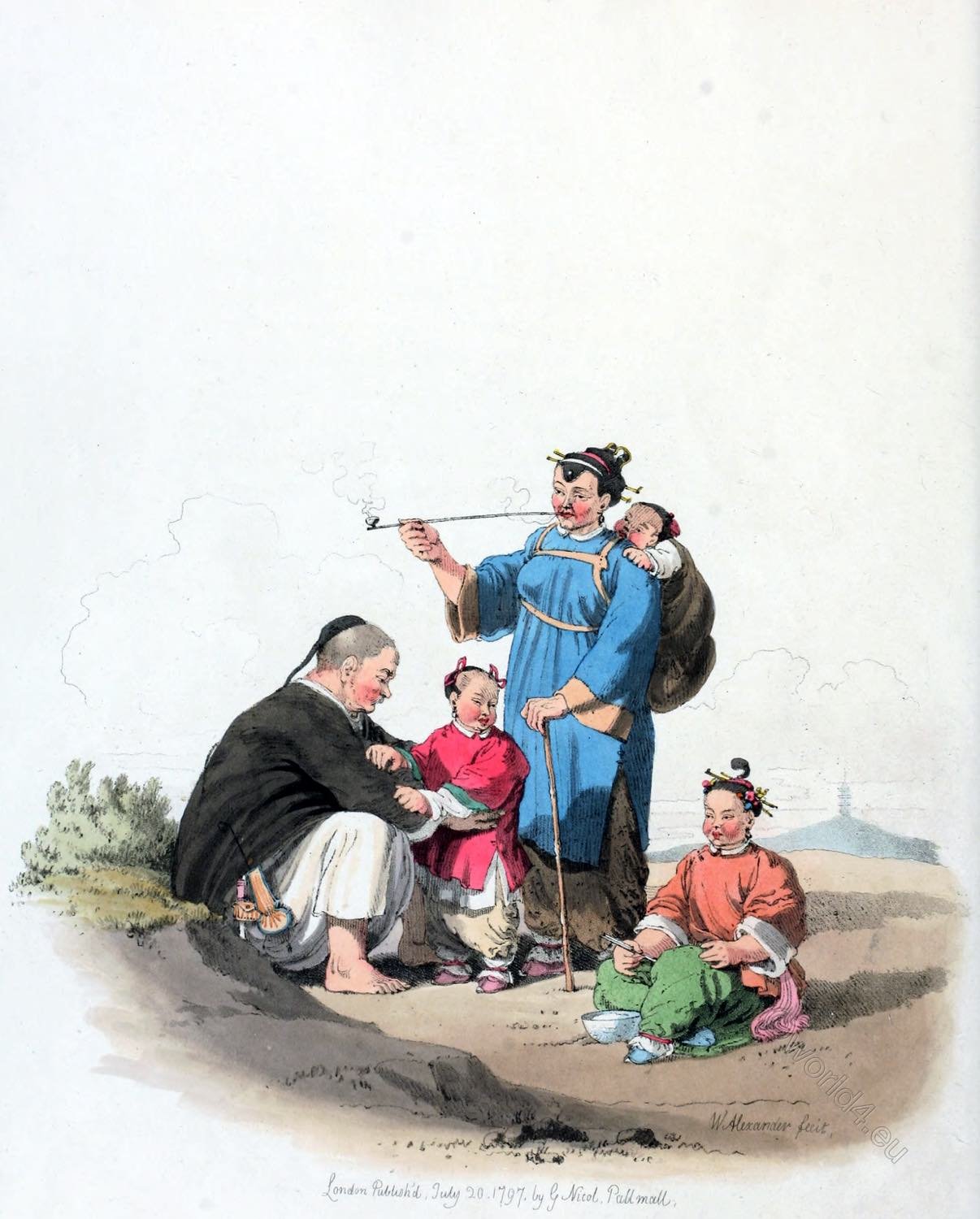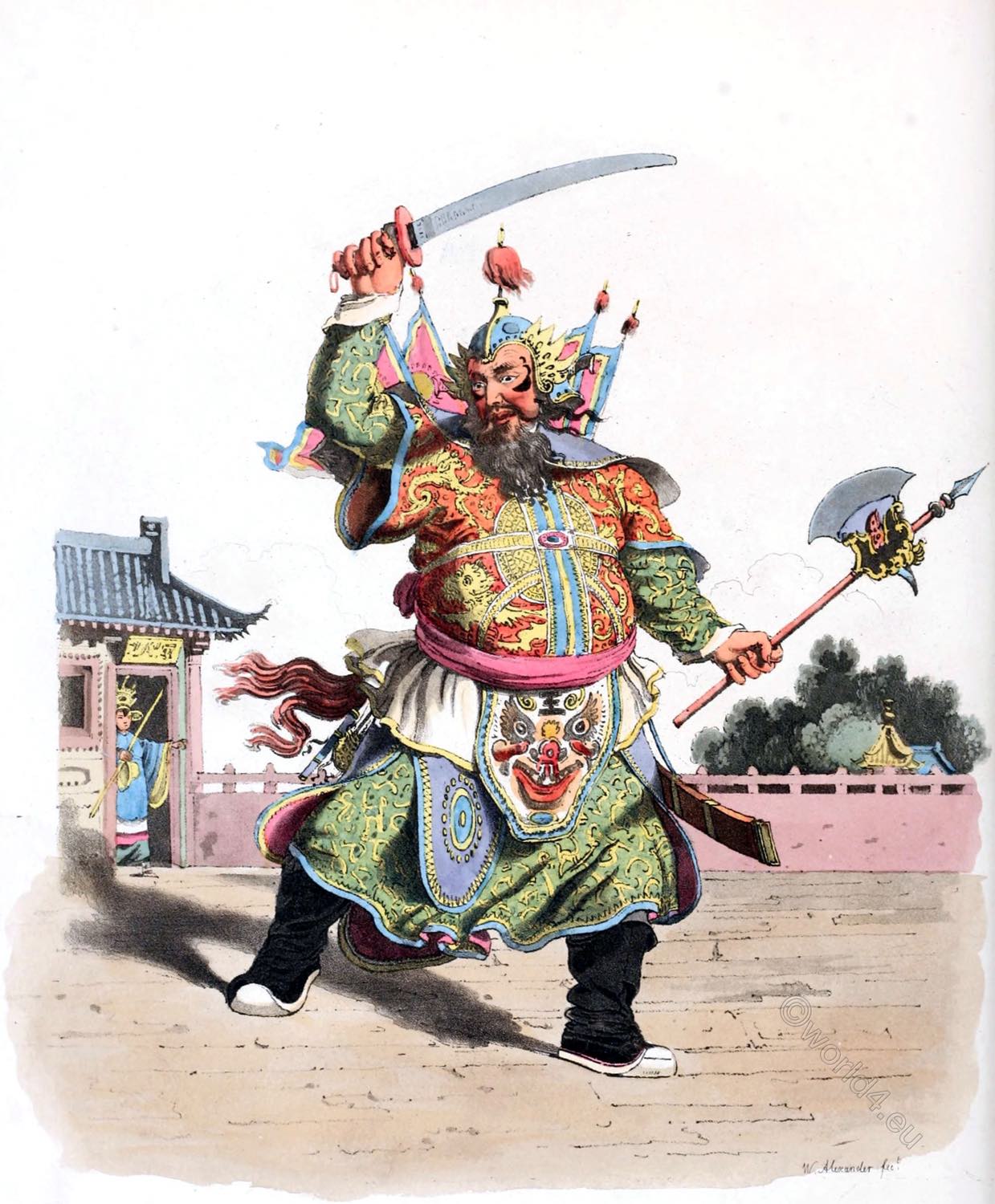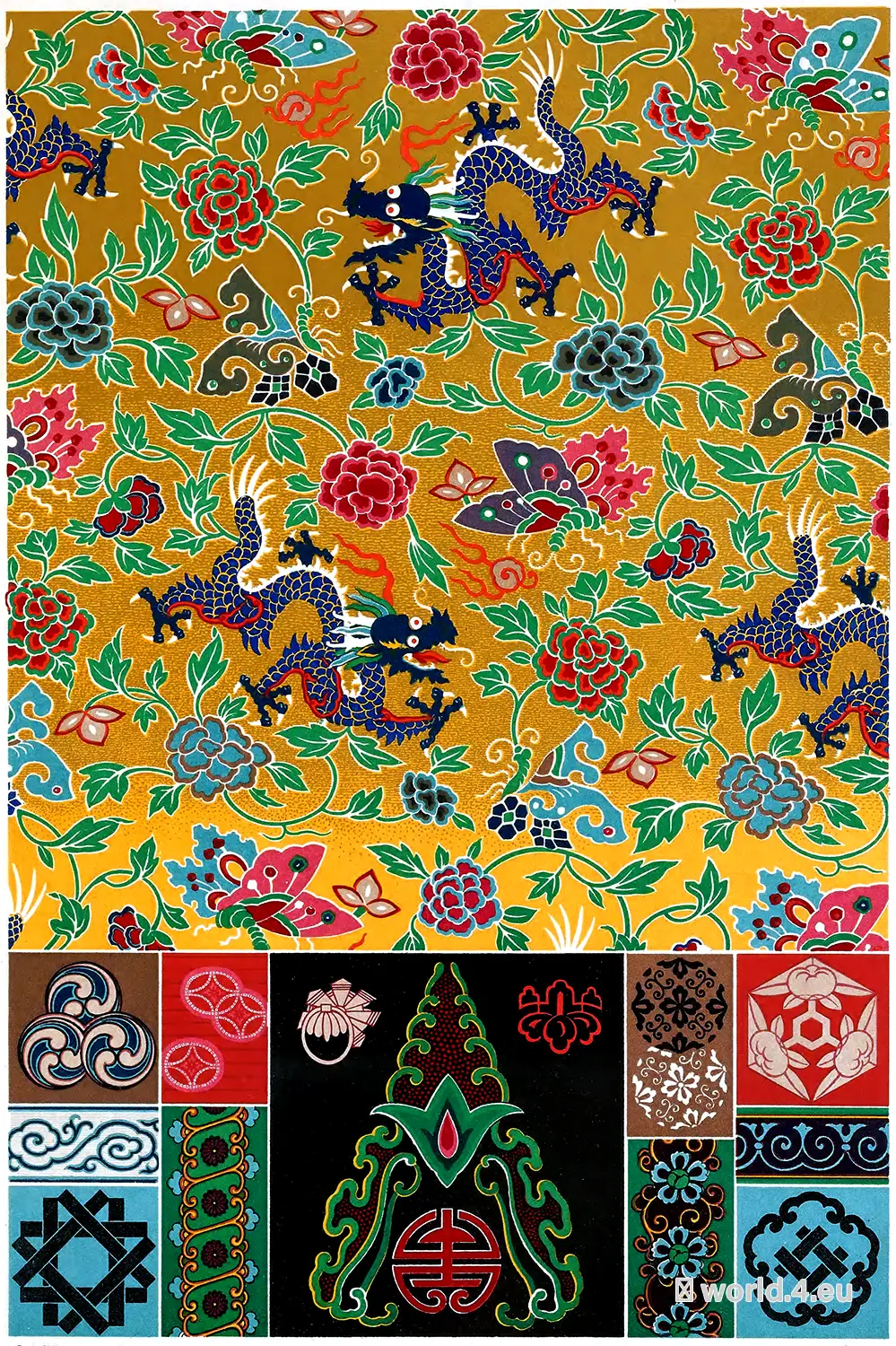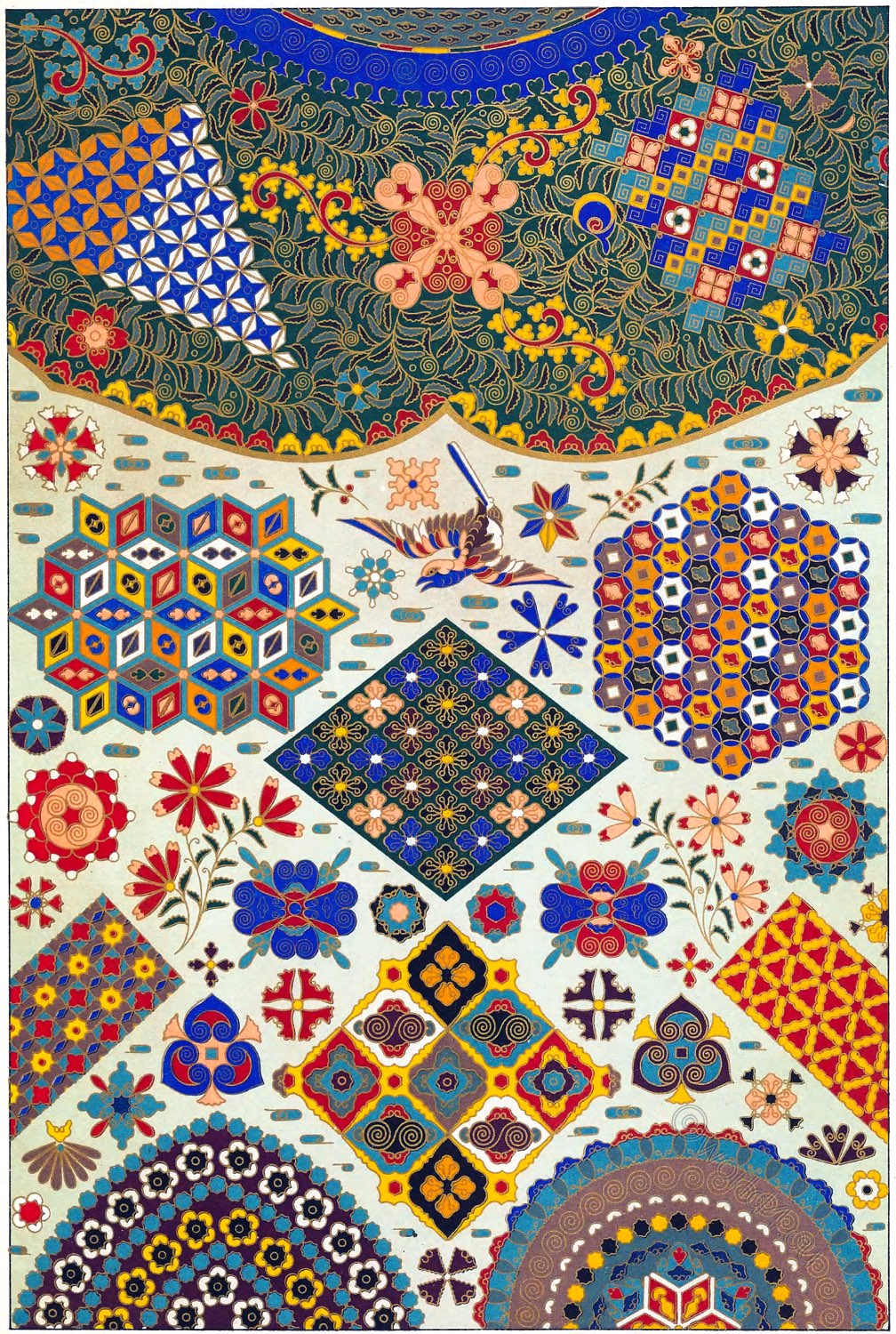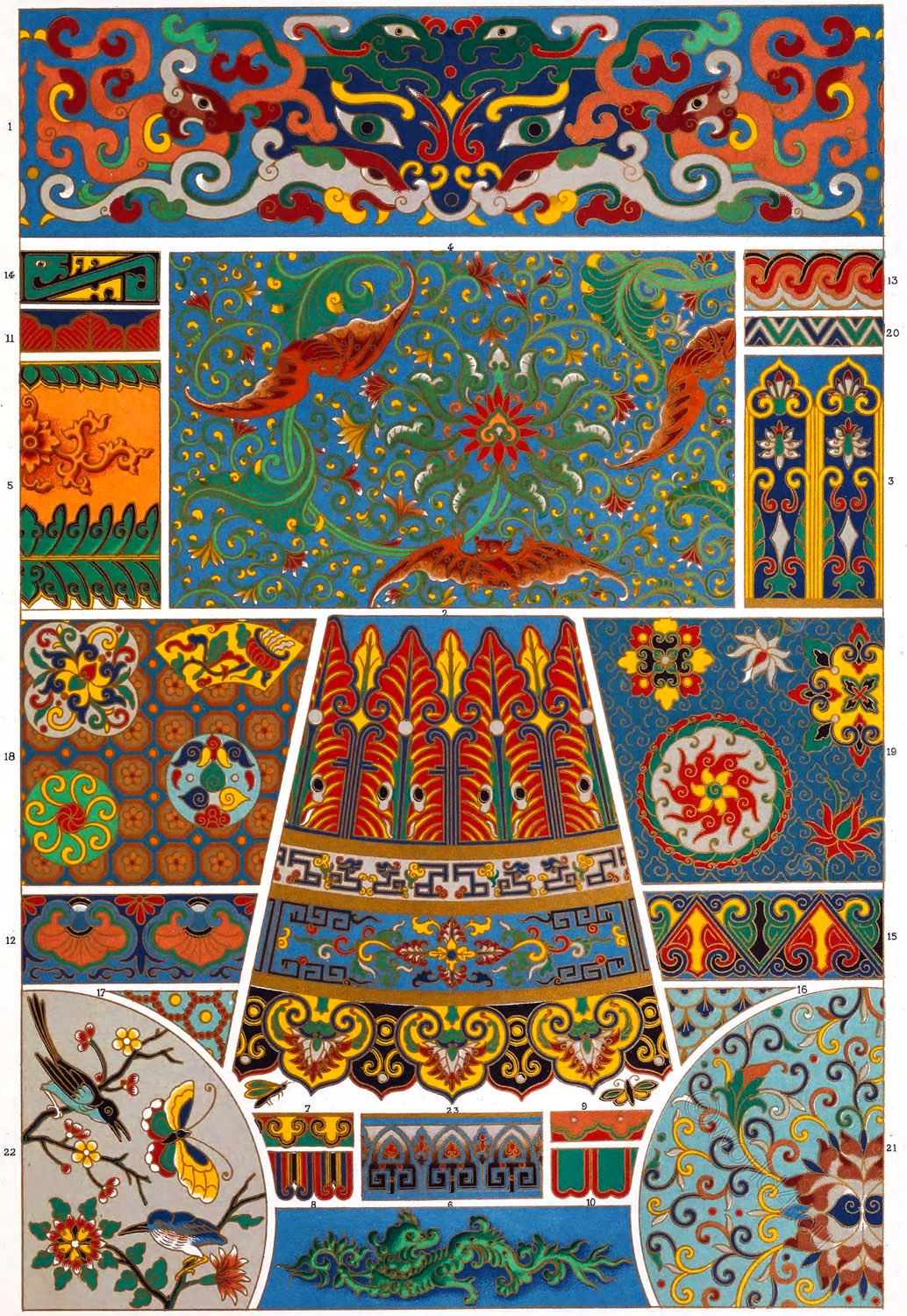Plate X.
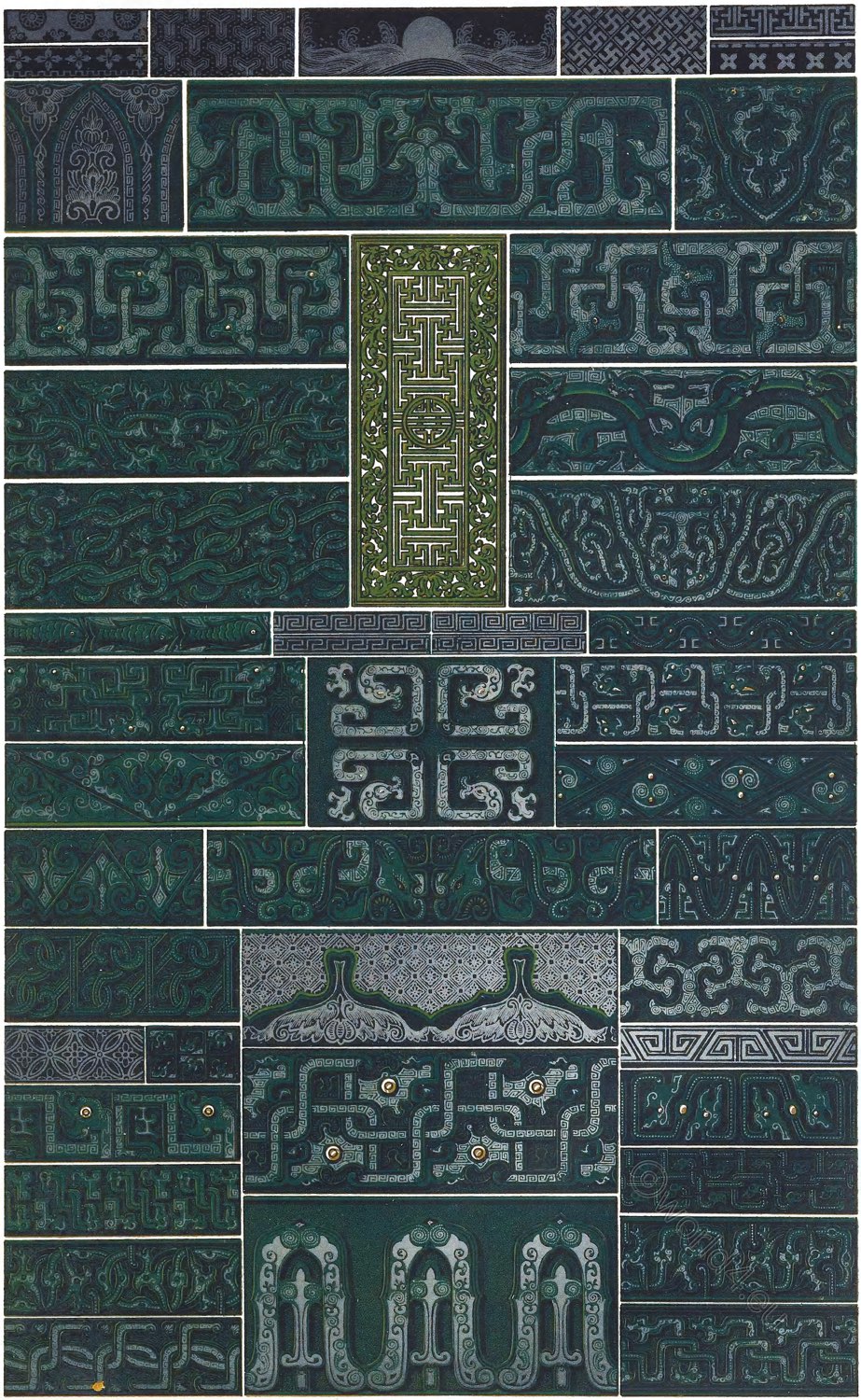
CHINESE ART.
MEANDERS AND SCALLOPS.
THE specimens contained in the accompanying plate are taken from vases in bronze, incrusted with tin, silver, or gold, in the possession of the Baroness de Rothschild and Messrs. Burty, Evans, Laurens, and Mentzer; some are modern, others of the highest antiquity. All were exhibited at the Exposition Orientale, organised by the Union centrale des arts appliques a l’industrie in 1869.
The greater number are described in the illustrated catalogue, in 42 folio volumes (Bibl. Nat.), of all the vases formerly contained in the Imperial Museum of Peking (Beijing), the majority of which were unfortunately destroyed at the sack of the Summer Palace. This loss is to be regretted from an historical as well as from an artistic point of view, as many of the vases were manufactured in commemoration of historical events, and thus served as memorials of facts and dates, as proved by the researches of M. Stanislas Julien.
This great Chinese scholar, when exhibiting a sketch of one of these vases, the inscription on which proved that it was presented to the emperor Wen Wang, 1200 years before our era, i. e. about the time of the siege of Troy, asserted that there were others more ancient still.
From the ornamentalist’s point of view few studies are so interesting as that of these spirited meanders, so different, notwithstanding their similarity of class, from the lineal rigidity of their Greek successors. These ornamental designs, the symmetry of which is so ingeniously varied, give a high idea of the decorative art of the ancient Chinese, and are capable of numerous applications to modern decoration.
Source: Polychromatic ornament by Auguste Racinet. London, H. Sotheran and Co., 1877.
More examples:
